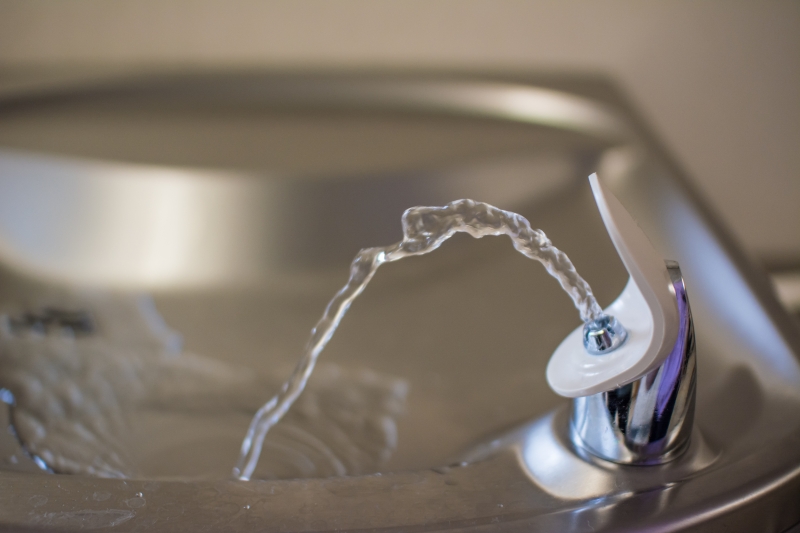For every story of a utility system in crisis that makes the headlines, many more struggle in the shadows. Out of the more than 40,000 small community water systems operating in the United States, almost 1,800 were designated serious compliance violators of the Safe Drinking Water Act (SDWA) in 2020.
How do we fix this problem? Money. “If you fix the money problem, you fix the problem,” Cassandra Rice, an attorney at EPA’s Office of Enforcement and Compliance Assurance, explains in a recent LGEAN podcast: “Systems return to compliance when municipal managers find ways to fund necessary improvements.”

Fortunately, many resources are available for local governments and municipalities seeking to invest in their water systems—whether they are tackling a serious noncompliance issue or planning infrastructure upgrades to ensure a safe and resilient water system for years to come. With all the options out there, the biggest challenge is simply knowing where to start.
A preliminary step is clarifying a critical distinction: funding versus financing. What’s the difference? As Tara Johnson of EPA’s Water Infrastructure & Resiliency Finance Center explains, funding refers to “one-way” financial resources that support an infrastructure project. This includes money from customers paying their bills and connection fees. Funding also includes sources of financial help that do not need to be repaid, such as grants. Financing, Tara distinguishes, is the “two-way” movement of money for a program or project, often in the form of loans or municipal bonds that require repayment of principal and interest over a period of time. Financing is more commonly used to support large projects such as infrastructure improvements—not the day-to-day expenses of ongoing utility operations and maintenance.
With this distinction in mind, let’s delve into a key financing option leveraged by many municipalities: State Revolving Funds, or SRFs. Despite the name, this is a source of funding for states to help cities finance infrastructure projects. EPA oversees two SRF programs to assist communities with financing water infrastructure programs: the Clean Water State Revolving Fund (CWSRF) and the Drinking Water State Revolving Fund (DWSRF). These funds are federal-state partnerships, where EPA allocates money to states, which then provide water and wastewater systems with low-cost financing options, including low- or no-interest loans. As a community pays back its loan, the money returns to the SRF, where it can be lent to another project. This creates a loan fund that revolves over time. The application process varies by state, so local governments should reach out to their local CWSRF and DWSRF contacts.
What can the SRFs help your community accomplish? Let’s start with the CWSRF. Officials at Hagerman, Idaho—a small city with a population under 1,000 and limited resources—needed to upgrade its wastewater treatment infrastructure and purchase land for wastewater reuse. The original $10 million price tag was unfeasible for such a small community, so Hagerman collaborated with the Idaho Department of Environmental Quality to design a personalized infrastructure plan that reduced the cost to $7.8 million, financed through a combination of SRF money and support from other funding agencies. In another example, the small town of Crown, West Virginia, situated in a remote area with rugged terrain, struggled with affordable wastewater infrastructure. Crown received a $1.57 million grant through the CWSRF from the West Virginia Department of Environmental Protection. Additional county-level funding helped the town improve its septic tank system and protect public health.
In an example of effectively leveraging the DWSRF, the Village of Stockton in Hazle Township, Pennsylvania, discovered that its water source suffered from bacterial and metal contamination. Making matters worse, most homes in Stockton relied on a degraded pipe system that had narrowed to a width of less than one-half an inch of flow. Stockton received $2.2 million from the Pennsylvania Drinking Water SRF to install a new water distribution line, connecting them to the nearby city of Hazleton’s safe and reliable water system.
Moving beyond the SRF, consider resources EPA and other agencies offer specifically to help small rural communities. These localities face unique water infrastructure challenges and often lack sufficient financial resources to solve these problems. USDA Rural Development’s Water & Environmental Programs is one strong option for financing. USDA administers a variety of grant and loan projects, including some grant programs specifically designed for tribal lands and Native Alaskan villages. Tribes can also explore resources available through the Clean Water Indian Set-Aside Program and the Drinking Water Infrastructure Grants—Tribal Set-Aside Program, additional sources of funding for wastewater treatment and other tribal water infrastructure projects.
Still looking for options? Check out EPA’s Water Finance Clearinghouse, an extensive database you can use to explore financing resources and case studies from communities that have embarked on successful water financing projects. The Environmental Finance Center Network has also compiled a collection of financing resources, broken down by state, that you can access through a clickable map tool.
Need help with the rest of the financing process beyond identifying financial options? EPA has assembled an eight-step process to guide you through building a financing program from scratch, from assembling a team to communicating your financial plan.
For more information about all of these topics, check out LGEAN’s recent podcast episode: The 4-1-1 on Financing: Strategies and Support for Small Water and Wastewater Systems, and keep an eye out for more details on the upcoming LGEAN workshop on financing for small drinking water systems!
